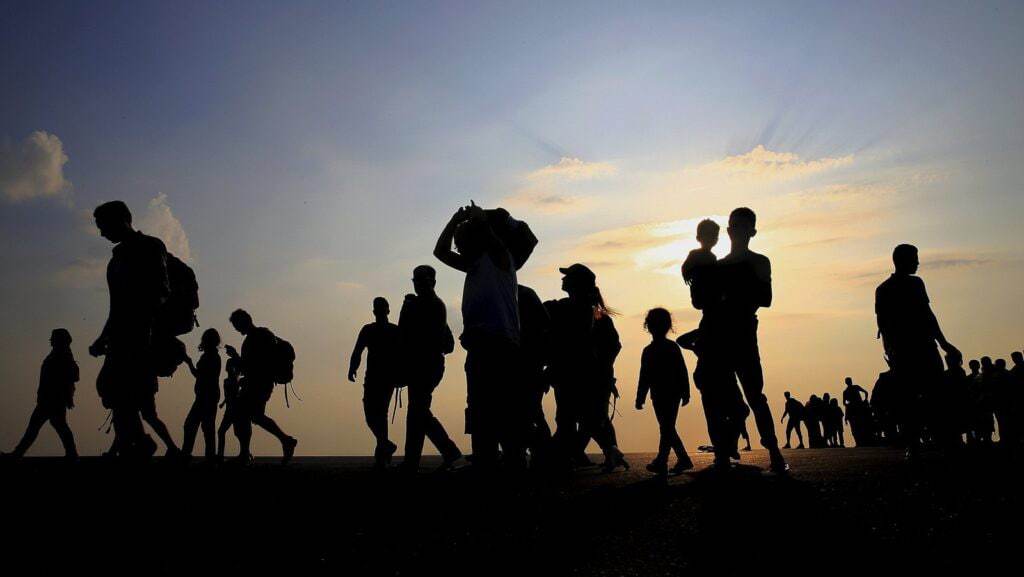ASTANA – In 2023, over 9,000 people from Central Asian countries migrated to Kazakhstan, predominantly choosing to settle permanently. This trend is anticipated to persist this year, according to an analytical article in Kazinfrom.

Photo credit: reuters.com
The largest number of migrants from the Kyrgyz Republic settled in the Almaty border regions, with 518 people, and in the Zhambyl Region, with 125 individuals.
Over half of the migrants from Uzbekistan were concentrated in the Mangystau Region, with 2,378 people, and in the Almaty Region, with 1,077 people. At the same time, those from Tajikistan primarily settled in Almaty (289 individuals) and the Karaganda Region (91 individuals). Arrivals from Turkmenistan were registered in Mangystau (849 individuals) and in Pavlodar regions (147 individuals).
Caress Schenk, an associate professor of political science at Nazarbayev University, with teaching and research expertise in the politics of immigration and national identity in Eurasia, emphasized that the primary risk associated with migration is its securitization, which views migration primarily as a security threat.
In an interview with Kazinform news agency, Schenk stated that perceiving migrants as security threats likely aggravates the situation more than the migrants’ actions themselves.
Recent years have seen citizens of Central Asian countries predominantly migrating to Russia, with some also heading to Türkiye, South Korea, European countries, and the United Kingdom, seeking better livelihoods and higher wages.
“In the last few decades, most migration from Central Asia has been directed towards Russia due to post-colonial ties, Russia’s relatively strong economy, and its proximity. However, in the past five years, we have observed a diversification of destinations. Millions of migrants still head to Russia every year, but they are also going to Türkiye, South Korea, and increasingly to Europe and the UK,” she said.
According to Schenk, the influx of migrants has somewhat complicated the lives of foreigners in Kazakhstan regarding access to online services through government platforms, registration with the migration police, and visa regulations.
Statistical insights
Official statistics from the Bureau of National Statistics indicate a positive trend in external migration for Kazakhstan in the previous year. In 2023, 25,399 people arrived in the country, while 16,055 departed. This reflects a 46.9% increase in arrivals compared to 2022, while departures decreased by 33.7%.
The majority of arrivals were from the Commonwealth of Independent States (CIS) and China, accounting for 86.3%, while the share of departures to these countries was 77.3%.
Kandas (ethnic Kazakhs) comprised the largest share of arrivals at 39.3%, followed by Russians (31.1%), Uzbeks (3.6%), Ukrainians (3.1%), Tatars (2.1%), and Germans (1.5%). Departures were predominantly Russians (62.6%), followed by Kazakhs (6.6%), Germans (12.6%), Ukrainians (6.7%), Tatars (2.2%), and Uzbeks (0.7%).
Over the last two decades, Kazakhstan has experienced a decrease in the number of people leaving the country. For over a decade, the country exhibited negative migration values, indicating a higher number of departures than arrivals. The most significant negative values occurred from 2000 to 2003.
Kazakhstan’s migration policies
Kazakhstan has implemented changes to registration rules for foreigners starting from January. The country adopted a new concept for the next five years (2023-2027), focusing on various aspects of migration management, including recognition and guarantee of migrants’ rights and freedoms, protection of national interests and security, balancing individual, societal, and state interests, transparent regulation of migration processes through updated and shared information, among others.
The recent launch of the migration portal, enbek.kz, facilitates unified registration of foreign citizens, regardless of their purpose of arrival, streamlining the monitoring and management of migration flows.
Askarbek Yertayev, chairman of the Migration Committee of the Ministry of Labor and Social Protection, disclosed plans to establish a comprehensive information system for tracking migrants’ movements, aiming to create a centralized platform for digital identification and monitoring.
Since January, foreign citizens have been required to undergo mandatory fingerprint registration, coordinated through local police authorities.
Kazakhstan has expressed particular interest in attracting specific migrant groups, including highly skilled individuals and ethnic Kazakhs seeking to return to their homeland. Since July 2023, ethnic Kazakhs abroad have been able to access simplified entry to Kazakhstan through the Ata Zholy (Ancestors’ Path) card without compromising their citizenship.
“Ethnic Kazakhs from countries beyond neighboring regions, such as the United States and European countries, have also shown interest in obtaining the Ata Zholy card. As of now, the card has been issued to 44 families, including 24 people with sought-after professions and 20 entrepreneurs,” said Yertayev.
Ata Zholy cardholders receive a 10-year residence permit upon entry into Kazakhstan.
The country has set a quota of 22,000 people for attracting foreign labor for employment purposes in 2024. Last year, approximately 14,000 permits were issued for commercial sector labor immigration.
New migration trends
Schenk noted that analysts monitor whether migrants will cease traveling to Russia for various reasons, including political challenges such as difficulty in obtaining legal status, moral objections such as protests against armed conflict, or economic incentives elsewhere.
“Despite these factors, migration pathways from Central Asia to Russia remain dependable. However, in response to Russia’s heightened scrutiny of migrants following a terrorist attack, the region has seen an uptick in security measures. For instance, Türkiye recently ended visa-free entry for Tajiks. Such security-focused actions may exacerbate the isolation and potential radicalization of migrants,” she said.
Despite shifting attitudes toward Central Asian migrants and increased security protocols worldwide, Kazakhstan has refrained from implementing restrictions. According to experts, the state effectively managed the substantial influx of migrants in 2022. Nonetheless, they caution that the primary risk in the migration process is its perception as a security threat.
The article was originally published in Kazinform.

